
Clean water matters: journalists carry out an experiment
Every day, we drink, use and bathe in water. Yet water contamination is on the rise, another example of our vulnerability to environmental degradation, so dramatically highlighted by the COVID-19 pandemic. The good news is that it’s easy to check water quality, and so avert the danger by ourselves.
Water bodies in Kyiv: an experiment
When we started preparing for an experiment, we asked ourselves the following question: if we could check the water for just a few minutes, could we control its quality? And the answer was “Yes”.
You can buy rapid test kits on the Internet in just a few clicks (they cost from 200-500 hryvnias – €6-15). They are also sold at pet stores.
You have to:
- buy a test kit
- dip a test strip into water for one minute
- check results according to markers stated in the test kit specifications
Where and why we tested water (ideas for readers)
- the Dnipro River (the main river in Kyiv)
- a lake in the Obolon District (a favourite summer haunt for residents of Kyiv)
- a public water pump (a place where Kyiv’s residents collect drinking water
24 Channel’s website journalists also reached out to the State Agency for Water Resources of Ukraine and the Interregional Office of Protective Arrays of Dnipro Reservoirs to test water under their experts’ surveillance.
Anton Biriukov, a leading chemist of the State Agency for Water Resources of Ukraine, explained that this rapid test kit can identify nitrate and nitrite indicators. However, the concentration of nitrates and nitrites, as well as other compounds, needs to be measured more precisely at a laboratory through a fully-fledged analysis.
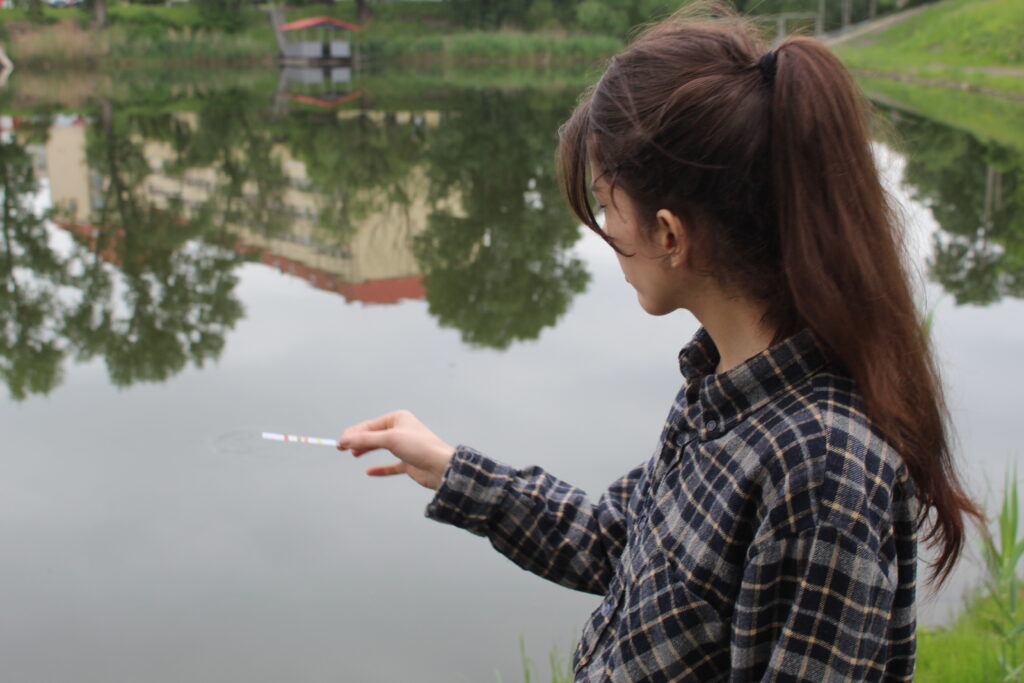 An experiment with river water
An experiment with river water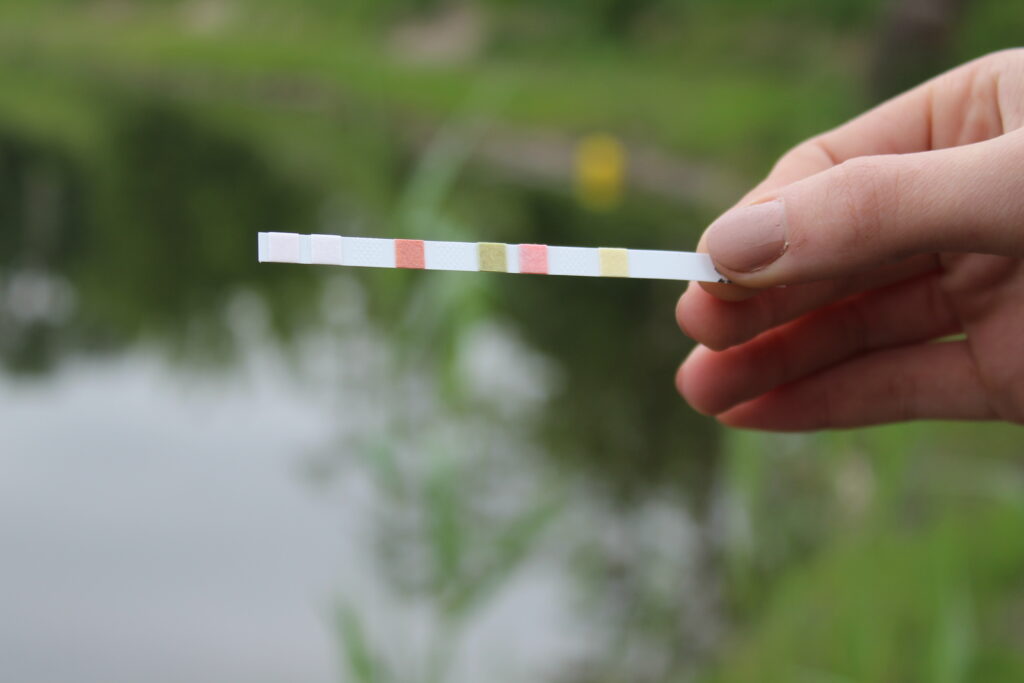 An easy way to check water quality
An easy way to check water quality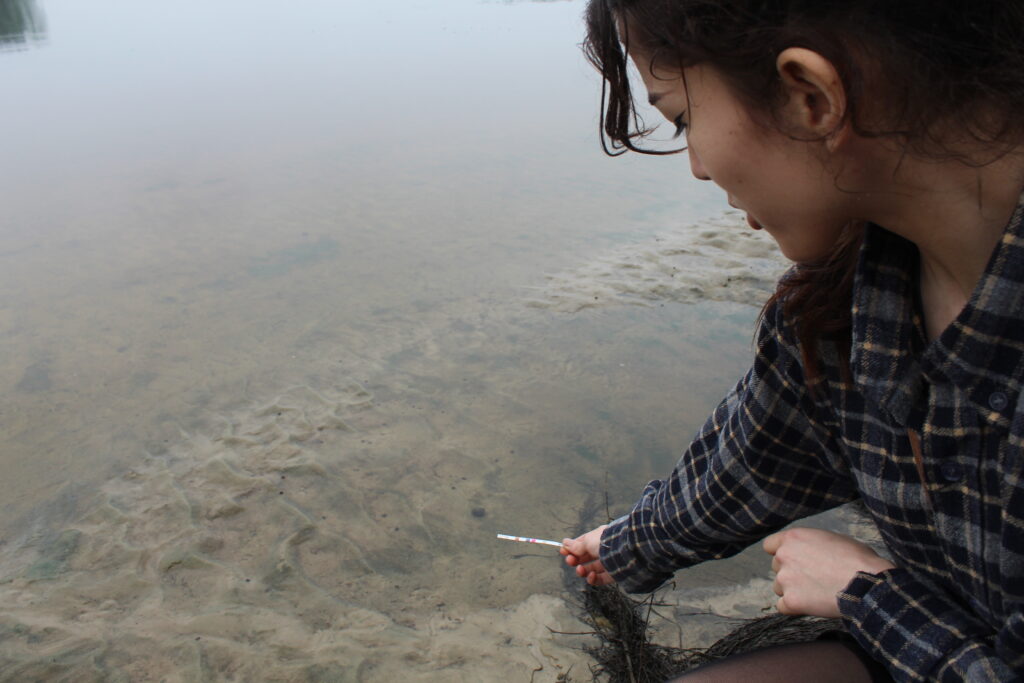 Testing water with simple stripes
Testing water with simple stripes
Soil and surface and groundwater always contain nitrates and nitrites. This is caused by both natural nitrogen cycles and anthropogenic environmental impact.
Biriukov noted that you have to take water samples with preserved properties to check water quality at a laboratory. This means the water has to be fresh.
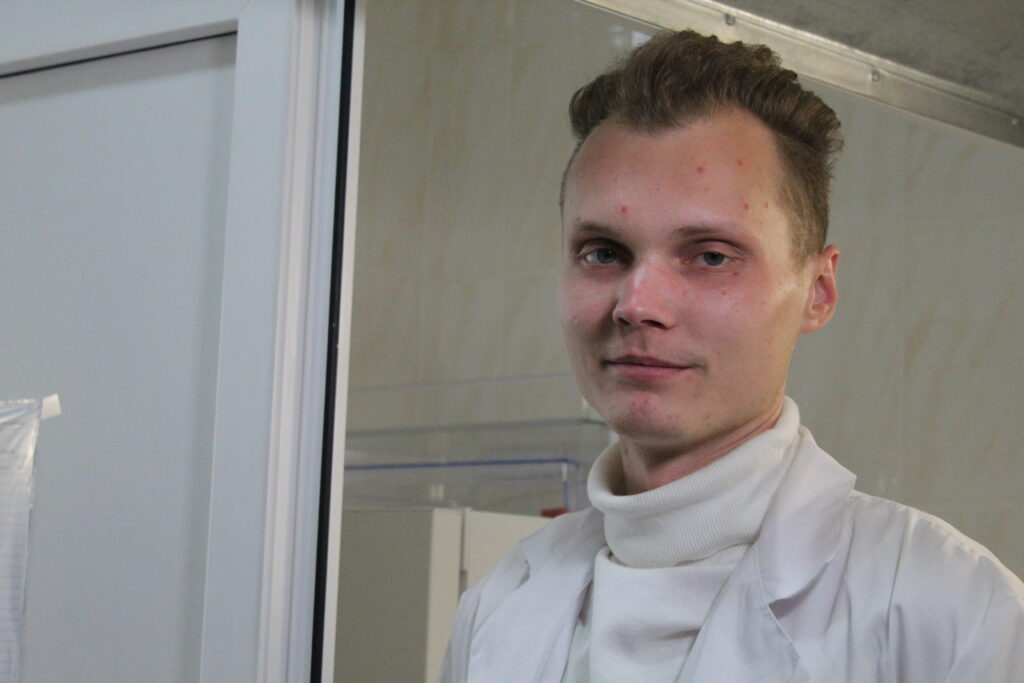 Anton Biriukov, a leading chemist
Anton Biriukov, a leading chemist Residents of Kyiv often come to the lakes to relax
Residents of Kyiv often come to the lakes to relax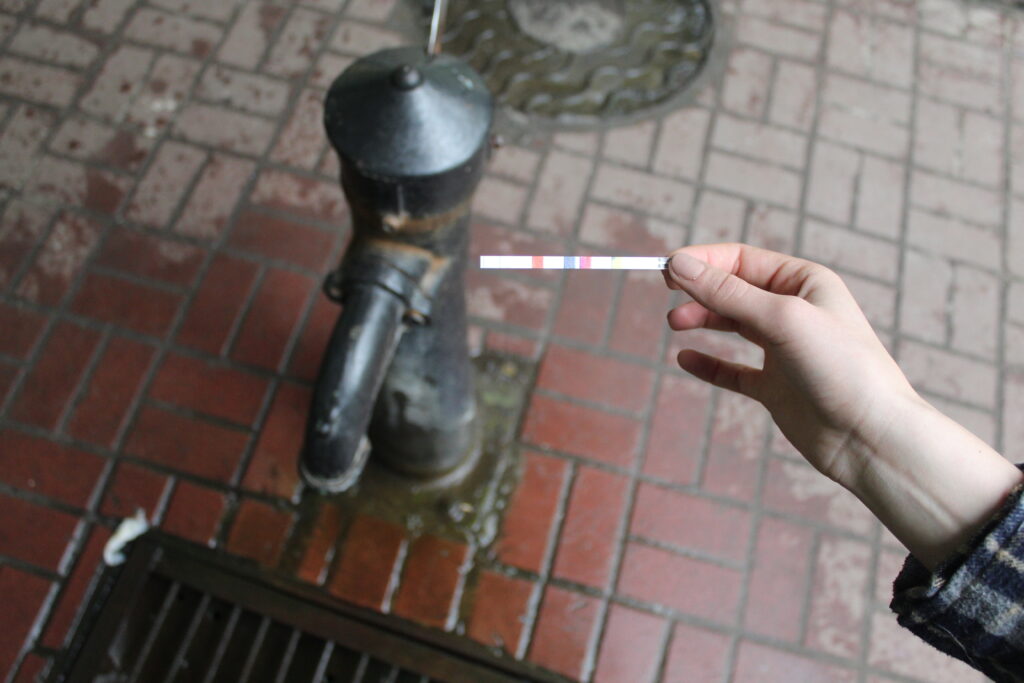 Using a rapid test kit to check water from the public water pump
Using a rapid test kit to check water from the public water pump
According to leading chemists, as a rule, the concentration of different compounds in water is low. However, if a quick test shows a bright colour, it means that water is contaminated.
What are the results?
The water taken from the three experiment sites in general turned out to be suitable for use and drinking. The concentration of nitrates and nitrites in the water bodies is within normal limits – up to 10 mg/L.
However, it should be noted that if nitrate and nitrite levels exceed 10 mg/L, water is not recommended for drinking and using in hygiene procedures.
Details:
- The total water hardness at the three testing sites is within normal limits.
- The total dissolved solids for the Dnipro River and the public water pump exceed water quality standards, while the indicator for the lake is within normal limits.
- The acidity (рН) of water from the Dnipro River and the water pump is within normal limits. The pH of water from the lake is lower than the acceptable levels; this means that the water is more acidic.
- The free chlorine levels for the Dnipro River exceed the acceptable levels, while it is not present in water from the pump room and the lake.
The experts warned that rapid test kits should not be compared with professional equipment, because using test strips is a portable method that has large margins of error and uncertainty.
“The test strips measure six indicators, and our laboratory identifies approximately 15-18 indicators,” explained Biriukov.
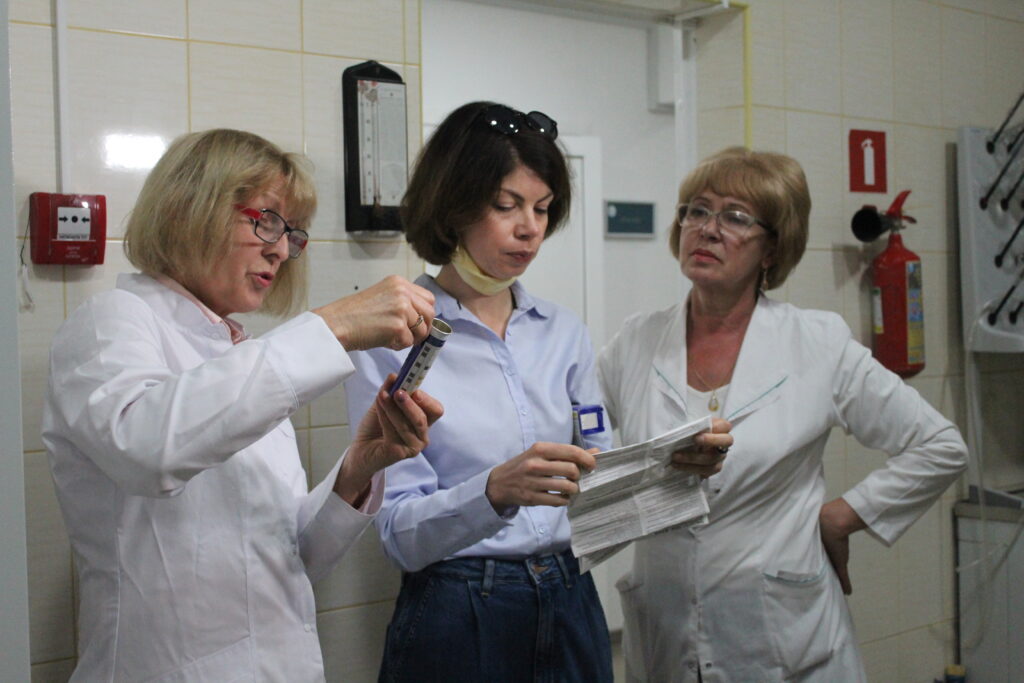 Experts recommend reaching out to laboratories for detailed testing
Experts recommend reaching out to laboratories for detailed testing
According to Biriukov, fertilisers used in agriculture, as well as enterprises that discharge different substances into water bodies, are key sources of water pollution with nitrates and nitrites.
“Soils are treated with fertilisers. Then it rains, and related substances get into the groundwater. They then migrate and come into surface water, in particular to human wells. Moreover, enterprises use various substances for their needs and illegally discharge them into the surface water. And all these activities are not regulated. There are a lot of substances, but mainly these are pesticides used by the agricultural sector,” added the expert.
Is water in Ukraine safe?
Oksana Konovalenko, a representative of the European Union Water Initiative Plus for the Eastern Partnership Countries (EUWI+ 4 EaP), said that in Ukraine, approaches to water resource management have been changed. To date, the Dnipro River Basin Management Plan has been developed.
Konovalenko identified untreated wastewater from public utility companies and the agricultural sector as major causes of water pollution. In particular, pesticides are toxic for animals and microorganisms present in the water.
“If we take certain measures, the situation will not change immediately, but sooner or later, everything will start working. The key objective is to avoid the entry of pollutants into natural water. The best and the most expensive actions that should be carried out include the improvement of all the treatment facilities – public utility facilities and those involved in production processes. Moreover, the amounts of substances used for treating soils have to be established. This will decrease the amount of harmful substances that get into water bodies. Our experts develop agricultural practices and regulations that we have to follow,” added Konovalenko.
 The water testing equipment at the laboratory
The water testing equipment at the laboratory
How the situation could be improved
- In Europe, one of the positive case studies is the improvement of the environmental state of the Rhine in Germany, which has been transformed from a polluted river to a cause of national pride. Ukraine has a unique chance to change the current situation – local experts, assistance from the EU, and citizens’ engagement can improve it.
- The government and society have to be responsible for the reduction of discharges into water bodies. To find solutions and prevent the consequences of a possible environmental disaster, pollution levels have to be decreased, and an efficient dialogue between all the water users has to be established.
- Under the EU-Ukraine Association Agreement, Ukraine aims to develop framework documents to regulate human activities according to environmental needs. In 2017, the Cabinet of Ministers of Ukraine issued a decree on the development of river basin management plans – a key instrument of the EU to address priority environmental issues and respond to citizens’ concerns.
The European Union Water Initiative Plus for the Eastern Partnership Countries (EUWI+ 4 EaP) promotes water policy reforms in the six Eastern partner countries: Armenia, Azerbaijan, Belarus, Georgia, Moldova, and Ukraine. One of its key objectives is to support Ukraine in the development of the Dnipro River Basin Management Plan. More specifically, the project aims to support partner countries in bringing their national policies and legislation into line with the EU Water Framework Directive and other multilateral environmental agreements.
Author: Alina Turyshyn
MOST READ
SEE ALSO

‘The Kremlin has entered the chat’: how to protect your personal data on Telegram and avoid the bait of propaganda
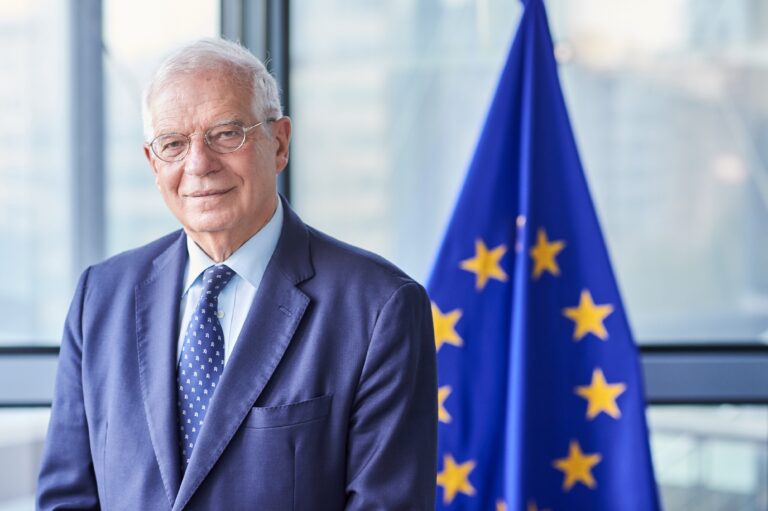
No, time is not on Russia‘s side

Socks for Peace: how the Vilni project is supporting internally displaced women in Ukraine
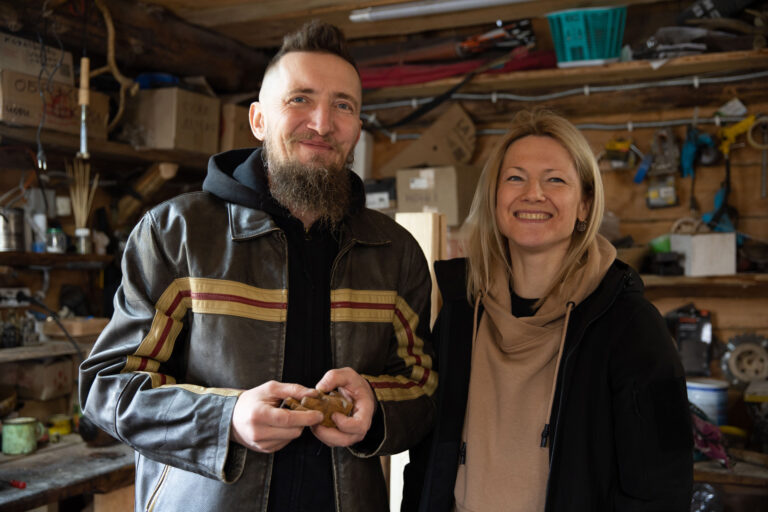
Celebrating traditional Ukrainian cultural identity in Rivne

Natalia wanted her child to escape the war: how a single mother set up a successful business in Lithuania
More campaign pages:
Interested in the latest news and opportunities?
This website is managed by the EU-funded Regional Communication Programme for the Eastern Neighbourhood ('EU NEIGHBOURS east’), which complements and supports the communication of the Delegations of the European Union in the Eastern partner countries, and works under the guidance of the European Commission’s Directorate-General for Neighbourhood Policy and Enlargement Negotiations, and the European External Action Service. EU NEIGHBOURS east is implemented by a GOPA PACE-led consortium. It is part of the larger Neighbourhood Communication Programme (2020-2024) for the EU's Eastern and Southern Neighbourhood, which also includes 'EU NEIGHBOURS south’ project that runs the EU Neighbours portal.

The information on this site is subject to a Disclaimer and Protection of personal data. © European Union,







